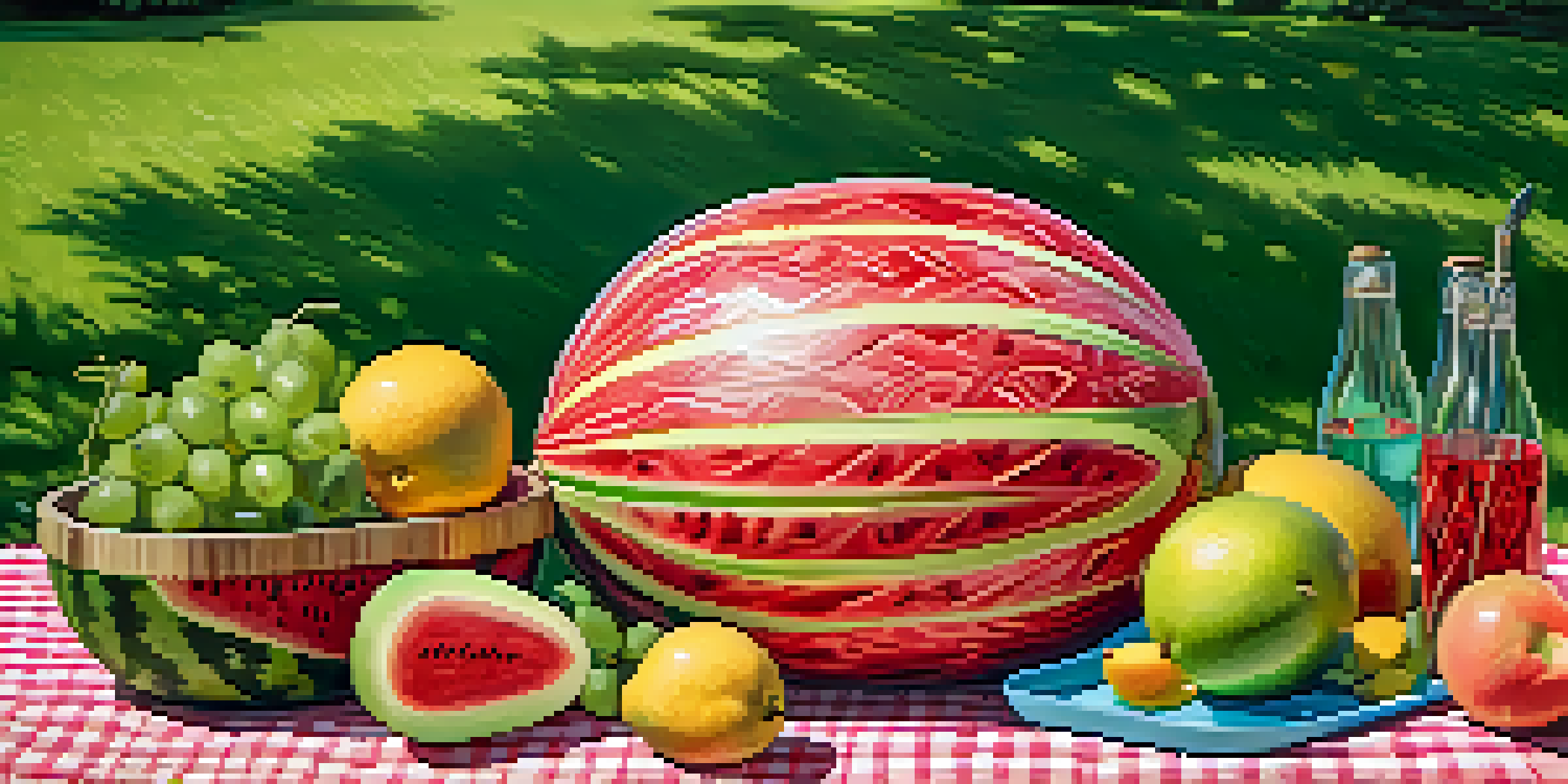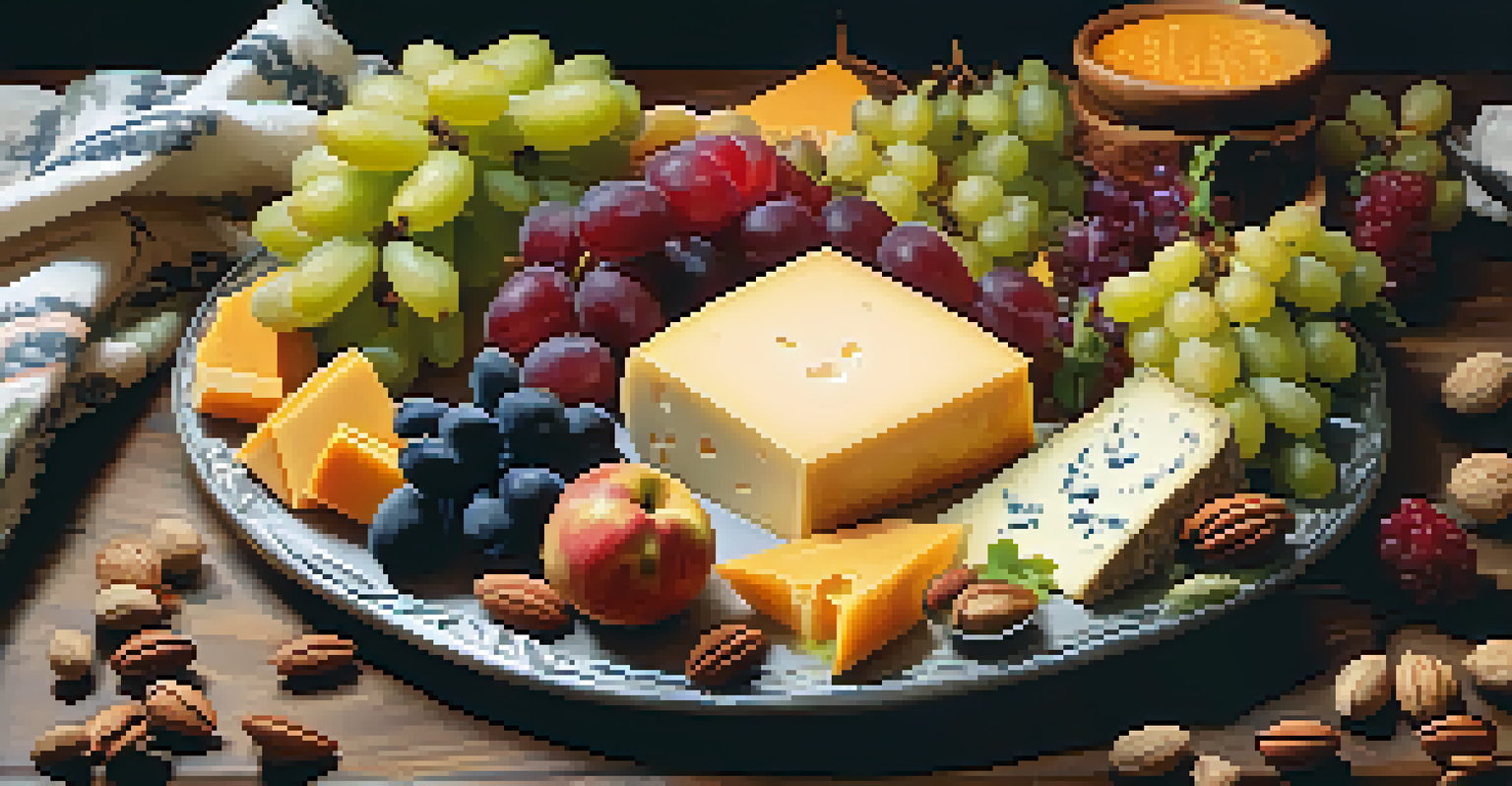The Role of Carving in Food Presentation: Enhancing Appeal

Understanding the Art of Carving in Culinary Presentation
Carving is more than just cutting; it's an art form that transforms food into visually appealing masterpieces. When done well, it adds an aesthetic layer that can elevate even the simplest dish. Picture a beautifully carved watermelon at a summer picnic; it instantly draws people in and sparks conversation.
Food is not just what we eat; it's how we feel about what we eat.
The skill of carving can be traced back through culinary history, where it was often used in grand feasts to showcase the chef's talent. Today, it's not just reserved for special occasions; home cooks and professionals alike can utilize carving to enhance everyday meals. This practice invites creativity into the kitchen and adds a touch of flair to any table setting.
Moreover, carving can serve practical purposes—sliced fruits and vegetables can be easier to eat, and intricate designs can help portion control. The visual appeal of carved foods also encourages mindfulness while eating, making meals not just about nourishment, but also about enjoyment.
Why Food Presentation Matters: The Psychology Behind It
The way food is presented can significantly impact our perception of taste and enjoyment. Studies show that a well-presented dish can enhance the dining experience, making flavors seem more vibrant. When we see a beautifully carved dish, our brains associate it with higher quality and greater care, leading to increased satisfaction.

This psychological effect is why restaurants often invest in skilled chefs who can carve and present dishes artistically. Diners are more likely to rave about a meal that not only tastes good but also looks stunning. The visual elements can create anticipation and excitement before the first bite is even taken.
Carving Transforms Food Presentation
Carving elevates the visual appeal of dishes, making meals not just about nourishment but also about enjoyment.
In essence, food presentation, including carving, plays a vital role in how we engage with our meals. It can evoke emotions, spark memories, and even create a sense of occasion, turning a simple dinner into a memorable experience.
Essential Tools for Carving: What You Need to Get Started
To start carving, having the right tools is crucial. A sharp knife is the most important item in your arsenal, as it ensures clean cuts and precision. Additionally, specialized carving tools like a carving fork or a melon baller can help you achieve different effects with ease.
Presentation is everything. It’s the first impression and the last impression.
Investing in quality tools not only improves your skills but also makes the process more enjoyable. Think of it like painting—having the right brushes can significantly enhance your artwork. Similarly, the right knives can elevate your carving game and inspire confidence in your abilities.
Once you have your tools, practice is essential. Start with simple designs on soft fruits or vegetables, and gradually work your way up to more complex shapes. Remember, every expert was once a beginner, so don’t be afraid to experiment and have fun along the way!
Techniques to Master: Basic Carving Skills for Beginners
Carving techniques can vary widely, but starting with the basics can help you build a solid foundation. One simple technique is the 'slicing' method, where you make thin, even cuts to create visually appealing shapes. For instance, slicing cucumbers into thin rounds can create a stunning garnish for salads or platters.
Another technique is 'sculpting,' which involves shaping the food into intricate designs. This can be as simple as creating flower shapes from bell peppers or as complex as carving a turkey for Thanksgiving. The key is to practice and become comfortable with your tools and food items.
Food Presentation Enhances Experience
Well-presented food can enhance our perception of taste, leading to greater satisfaction and memorable dining experiences.
As you become more confident in your skills, don’t hesitate to explore advanced techniques. Watching online tutorials or taking a class can provide you with new ideas and inspire creativity. Remember, carving is an art, and like any art form, it requires patience and practice to master.
Incorporating Carving into Everyday Meals: Simple Ideas
You don’t have to wait for a special occasion to incorporate carving into your meals. Simple touches can elevate a weekday dinner. For example, using a cookie cutter to create fun shapes in fruits or vegetables can make meals more appealing for kids and adults alike.
Another idea is to carve garnishes for your dishes. A beautifully carved lemon or lime can add a decorative touch to drinks, while carved herbs can bring elegance to any plate. Just a little effort in the presentation can transform a regular meal into a delightful experience.
Even breakfast can benefit from carving! Try slicing fruits into interesting shapes for a colorful morning plate. The goal is to make your meals not just food for sustenance, but an enjoyable and visually stimulating experience that everyone looks forward to.
Carving for Special Occasions: Impressing Your Guests
When it comes to special occasions, carving can truly shine. Whether it’s a birthday party, a wedding, or a holiday gathering, beautifully carved food can serve as a centerpiece that impresses guests. Think of a stunning fruit bouquet or a creatively carved cheese platter—these eye-catching displays can set the tone for the entire event.
Planning your food presentation ahead of time can make a significant difference. Consider the theme of your occasion and choose carvings that complement it. For instance, a Halloween party could feature carved pumpkins as part of the appetizer display, while a summer barbecue could showcase carved melons.
Carving Skills for Every Occasion
Incorporating carving into everyday meals and special occasions can impress guests and add a creative touch to any dish.
Ultimately, the effort you put into carving will not go unnoticed. Guests will appreciate the thoughtfulness and creativity behind the presentation, and it will foster a sense of celebration. This attention to detail can make your gathering unforgettable.
The Future of Food Presentation: Trends in Carving
As culinary arts evolve, so too does the practice of carving. Current trends include incorporating sustainable practices and using local, seasonal ingredients for carving projects. Chefs are increasingly looking for ways to minimize waste, which has led to creative uses for leftover produce, turning them into stunning carvings.
Technology is also playing a role in shaping the future of food presentation. 3D food printers and advanced kitchen tools are becoming more accessible, allowing both chefs and home cooks to experiment with unique designs and presentations. This innovation could redefine traditional carving and introduce new possibilities.

Looking ahead, the emphasis on social media will continue to influence how we present food. With platforms like Instagram and TikTok, there’s a growing desire for visually stunning dishes. Carving will remain a valuable skill, helping to create shareable content that captures the attention of food lovers everywhere.